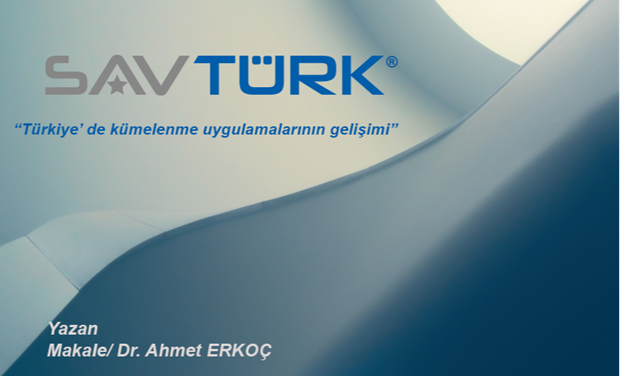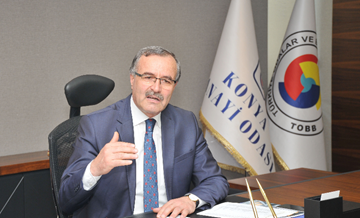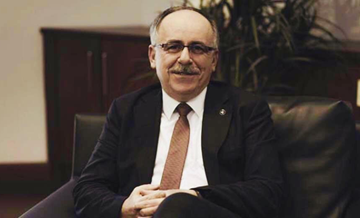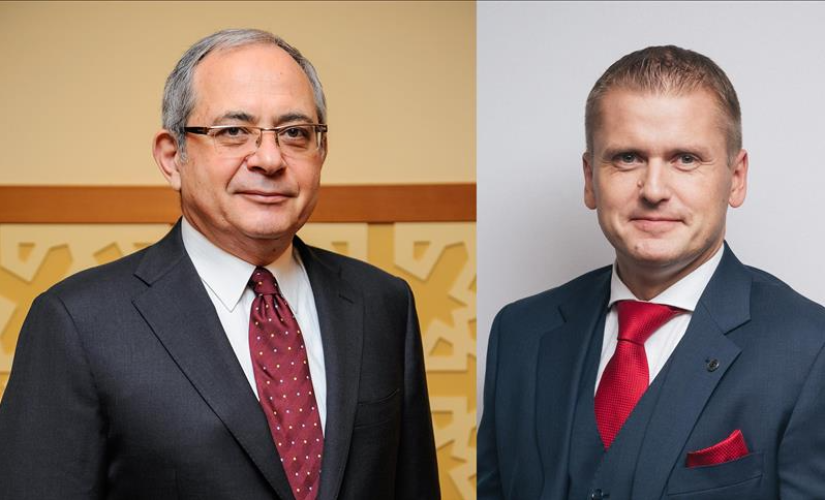ARTICLE / Ahmet ERKOÇ
Haliç University Head Of Industrial Engineering
Vice president of TÜDEP
DEVELOPMENT OF CLUSTERING PRACTICES IN TURKEY
Why Is Clustering Needed?
Today, changes in political, legal, economic, sociocultural, demographic, technological and international issues are taking place in an incomparable and comprehensive manner. Globalization has accelerated these changes and put businesses in a position where they cannot cope only with their own efforts. Globalization; besides economic activities, information, technology and ideas are defined as a concept that defines the spread of information, technology and ideas unhindered in all countries of the world and the political, legal, economic and sociocultural arrangements that support this spread (Ulgen and Mirza, 2010, p.309).
Competition with the effects of globalization takes place not only at the regional level but also at the international level. Rapid change in technology, evolving design and production processes, shortened product lifespans, liberalized trade, a large number of businesses located in different countries or countries are competing in the local market. Advances in technology and globalization have supported each other, enabling cheaper, faster, high-quality, new products and services to be offered to the customer. Markets have become buyers' markets. Customer decision can be brand-oriented. Clustering is one of the recommended methods for businesses to adapt to this new situation and gain a competitive advantage. Turkey is one of the first countries in the world to start clustering efforts. A large number of clustering studies have been carried out with the works that started in 1999.
Clustering is shaped by economic, technological and social variables at local, regional, national and global levels. Clustering requires that a wide range of institutions such as firms in the main sector, supporting firms, local environment, public institutions, educational institutions, non-governmental organizations work in cooperation. The clustering approach is implemented in more than 75 countries around the world in order to become a local, regional, national and global economic power by gaining a competitive advantage. The successful and rapid realization of clustering makes economic development at all levels more effective. The Joint Competition Areas Strategy Report found that more than 70% of clusters are industrial clusters or potential clusters. The information to be generated will enable faster and more powerful development of clusters.
Cluster Concept
Clustering (stacks) is an application that dates back to ancient cities. Cooperation in trade and crafts, lobbying, vocational training, the culture of following the rules agreed within a particular craft branch are also observed in the "Ahilik" institution, which has existed in Anatolia since the 12th century.
It is known and implemented that these gatherings provide certain advantages. The view that the clusters provided a competitive advantage is based on alfred Marshall's (1920) work in industrial areas of England. Michael Porter made the most important contribution to the prevalence of clustering. Porter's core work on competition and clustering; The Competition Strategy published in 1980; It is a 1990 Book of Competitive Advantage of Nations and a 1998 article on Clusters and The New Economy of Competition published in the Harward Business Review. Porter pioneered the widespread implementation of the case study in 2003 with his "Economic performance of regions". There is no consensus on the definition of the cluster. According to Porter (1998), the cluster was a group of 1998 shighs.
''Competing with each other, but also collaborating in certain areas of interconnected companies, specialist suppliers, service providers, companies in related sectors and related institutions (e.g. universities, trade associations) geographical condensation.''
According to morosini (2004), the number of morosini (2004) is the most likely to be used in the 1990s. "The industrial cluster is a socioeconomic organization characterized by the social community and a community of economic factors of people who have close relations in a particular geographical area."
Clustering; In Porter's (1998) terms, a force greater than the sum of its parts can be generated. This view has been proven by porter's field work.
Although there are different definitions of clusters, the concepts in which the majority meet are: condensation in a geographical area, studying, specializing, creating knowledge and innovation in similar or complementary subjects, being both cooperative and competitive, creating a social system, within the cluster and with its environment (universities, research institutions, public and non-governmental organizations) did not have a conscious and continuous cooperation in order to increase their competitiveness, a developed physical infrastructure, specialist suppliers and supporting enterprises
Clustering facilitates sustainable competitive advantage by increasing the efficiency, productivity, innovation capability, specialization and ability of enterprises to produce information.
Clustering of Key Features
Factors such as spatial proximity, networks, value systems, specialization, information sharing all support each other, enabling clusters to compete on a global scale. The lack of one of these factors can hinder success. it is stated that as a result of the specialization of the workforce, the dissemination of technical knowledge and the formation of the value system, the concept of cluster can be entered by differentiating from the stacks only (Rosenfeld, 1997).
One example is the inclusive formation of the British Motorsport Industry (BMSE) in cluster (quoted Demirköprülü, 2013). One-third of the world's single-drive racing cars are designed, manufactured and assembled by 40,000 employees (25,000 engineers) working in 3,000 operations in an area close to 50 miles in the South of England. The region has surpassed Italy, the most important source of racing cars with its technological innovations.
Clustering in Turkey
Clustering in Turkey started in 1999 under the leadership of Prof. Dr. Michael Porter's team and with the support of the Turkish Private Sector. Over time, it has established a wide platform with the inclusion of government agencies, universities and non-governmental organizations. The ministries that are directly effective in supporting the clustering approach are the Ministry of Science, Industry and Technology, Ministry of Economy, Ministry of Development. Units working under ministries actually support central and local practices. These are KOSGEB, The Turkish Technology Development Foundation (TTGV), the Scientific Research Institution of Turkey (TUBITAK) and development agencies in terms of activities at the regional level.
The infrastructure organizations that will support clustering physically and technologically in Turkey are Organized Industrial Zones (OSB), Technology Centers (TEKMER), Technology Development Zones (TGB) and Research Centers. Technoparks (Technokent) is a model that ensures that the university, industry and the state have new information and technologies under the same roof. It is an application of the structure that Etkowitz explained with the theory of the "Triple Spiral Model". In the trivial helix model, three factors that are independent of each other in innovation and information transfer, but have intersectional areas; business environment, educational and research institutions and the state; (Etkowitz, 2003). Founded at Istanbul Technical University, ITU Ari Teknokent and Yildiz Teknopark, established at Yildiz Technical University, have achieved significant success. However, in these applications, the full addition of the benefit has not been achieved.
The benefits of industry, university and government coming together and clustering approach will go far beyond the benefit that can be obtained from technoparks. In cooperation with Namik Kemal University and the Association for The Promotion of Technical Production and Export (TUDEP), technopark establishment activities are continuing in Tekirdag, Çorlu TGB-2 region with the aim of achieving many firsts unlike other technopark projects. The project is planned to focus on Aerospace, Defense Industry, Aerospace and Nuclear Power Plants; R&D and innovation infrastructure and laboratories are being established in textile/technological textile, medical equipment-pharmaceutical, chemical/cosmetics, software, mechanical-industrial automation, electrical electronics sectors.
There are programmes run by various public institutions to support clusters. With the International Promotion of Competitiveness (URGE) Communiqué implemented by the Ministry of Economy in 2010, joint needs analysis is implemented under the headings of joint learning and joint marketing in order to increase competitiveness in international markets. The project-based program is carried out in 330 projects with 4297 companies with 154 cooperation organizations. (http://www.smenetworking.gov.tr/Detay.cfm?id=224&MID=53,%20Eylül,2017).
Activities and sectors carried out within the scope of Approved Projects are as follows (2011-2017).
• Education (761)
• Overseas Marketing (562)
• Analysis of needs (326)
• Consultancy (197)
• employment (206)
• Purchasing Committee (76)
• Introduction (6)
In addition, 2,884 companies took part in the completed projects. The number of projects is increasing day by day. The Ministry of Science, Technology and Industry, is a support program that was communicated in 2012 and directly addressed to clusters. There are also several programs that are supported by public institutions that are not under the name of cluster. Some of these programs include; The "co-operation-unity support programme" run by KOSGEB, which aims to bring SMEs together. TUBITAK Scientific and Technological Cooperation Initiative is the Initiative to Establish Networks and Platforms. it aims to ensure the development of our country in the fields of technology, especially in line with science and technology predictions.
Clustering Support Program carried out by the Ministry of Science, Industry and Technology includes more comprehensive and long-term support.
Development of Clustering Applications in Turkey
Clustering efforts in Turkey were initiated in 1999 by Turkey's Competitive Advantage (CAT), a platform for public, industrial, universities and non-governmental organizations. In 2004, this platform became the International Association for Competition Research (URAK) and carried out important activities in the early stages of clustering.
Until 2008, clustering work was carried out quite differently and without coordination with each other. Clustering studies; Within the scope of the National Clustering Policy Development Project under the responsibility of the Undersecretariat for Foreign Trade (DTM), it has become more compatible with the "Cluster Mapping, Analysis and Clustering Roadmaps" (Synthesis) report published in March 2009. In this report; Turkey's situation is in the process of transition from the stage of economic development based on efficiency to the economic development based on innovation. Being able to switch to high value-added products and have a say in the world economy can be accomplished by creating competitiveness based on innovation.
The last study evaluating the development of clusters in Turkey was the Joint Competitive areas Strategy Report (Ministry of Economy, 2012). Total 356 clusters; According to the development process, the idea was evaluated on a quadruple scale, initial, development and mature. According to the results of this evaluation, there are only three clusters in the maturity stage. These include: METU Technokent Software Set is the SASAD- Defense and Aerospace Industry Manufacturers Association, TAYSAD- Group of Vehicle Vehicles and Sub-Industrialists. 14 clusters under development; MOSDER Turkish Furniture Manufacturers Association, Eskişehir-Bilecik-Kütahya CeramicS Business Cluster, ITKIB- Fashion and Textile Business Cluster, Ankara Clothing Manufacturers Association, OSTIM Defense and Aviation Cluster, OSTIM Business and Construction Machinery Set, OSTIM Medical Industry Clustering, OSTIM Renewable Energy and Environmental Technologies Cluster, Izmir Industrial Ventilation, Air Conditioning and Cooling Cluster, Izmir Organic, Izmir Aerospace Clustering, Izmir Inovious Biomedical Technologies, Konya Automotive Sub-Industry, Mersin Logistics Platform.
There are 18 clusters in the initial clusters. The remaining 321 clusters are in the idea phase. Classifications based on the level of development of clusters may vary in the synthesis report and other sources.
The clustering works at OSTIM have a special place in Turkey that can be an example of successful clustering efforts. The six clusters formed by ostim OSB management and cankaya university together; Is a set of business and construction machinery, defense and aerospace, renewable energy and environmental technologies, medical industry, rubber technologies, Anatolian rail transportation systems. Joint efforts with universities contribute to cluster companies while at the same time facilitating the training and supply of qualified workforce.
OSTIM Joint Research and Development Center (ODAGEM) is an R&D company established to meet the technical requirements encountered in engineering and manufacturing. In addition to the engineering, consultancy, training services it provides, it conducts research and implementation of new technologies regardless of region or sector. ODAGEM, which carries out various R&D projects, also carries out a SANTEZ project for the development of the "Virtual Factory" prototype at OSTIM. The project aims to establish a network in which SMEs in OSTIM can carry out joint design, co-production and co-marketing activities.
OSTIM Investment S.A.'s mission; To make investments that increase quality and added value in Ostim Organized Industrial Zone, to provide integration that will increase the business volume of the goods and services produced by domestic SMEs, especially Ostim, by bringing them together with domestic and foreign markets, determined. Its important shareholders are OSTIM Foundation and OSTIM Project Development Training and Consulting Inc.
Middle East Technical University (METU) Technokent, located in OSTIM, is an important resource in terms of its support for development with advanced laboratories and research centers and most importantly, its knowledge.
One of the most successful clustering applications in Turkey was carried out by istanbul Textile and Apparel Exporters' Associations (ITKib). itkib; It is a union established in 1986 to increase export potential in textile, apparel, leather and carpet sectors, to promote sectoral products and to assist its members in international activities. It has developed over time and strengthened its corporate structure. Today, it has a structure consisting of four separate unions. These are the Istanbul Ready-to-Wear and Apparel Exporters' Association, the Istanbul Textile and Raw Materials Exporters' Association, the Istanbul Leather and Leather Goods Exporters' Association and the Istanbul Carpet Exporters' Association. With more than 15,000 members, the foundation has a significant accumulation in the sector.
The Development of a Fashion and Textile Business Cluster in Turkey is a project financed with EU funds with a budget of EUR 17 million under the umbrella of ITKiB. It was realized in 2005 and 2006.
The aim of the project is to increase the international competitiveness of companies operating in textile and apparel sectors by clustering method. The project consists of three parts: cluster analysis, investment support analysis and corporate development. In the analysis, the data were conducted. network structures, input output analysis and the identification of the value chain and SWOT analysis were performed. It was decided to cluster with a trilateral structure by ensuring the participation of the stakeholders. These include: The management company, fashion institute and R&D center that will be responsible for the management and coordination of the cluster. Coordination Center is itKIB Support Inc. established as a joint stock company. The fashion institute's current education system is designed to cover textile technology and engineering. Fashion Academy provides hands-on trainings to meet the needs of the sector such as designers and style specialists. The trainings range from production to design, from printing techniques to fashion photography.
With collaborations with international fashion schools, a productive environment for both education and relationships is created. In the R&D center, common use equipment has been obtained to ensure that SMEs in the sector are more innovative by following up-to-date technologies. Consultancy Center has been established to direct cluster members on issues such as product development, sales, marketing, brand development and management, quality management and export development. This center is planned to provide information and application support to SMEs. Today, clustering continues on the basis of the preservation and development of the first structure. According to the author's meeting with cluster coordinators; The Ministry of Economy has projects under the Scope of International Competitiveness Development (URGE).
As new targets, they stated that they wanted to turn to smaller segments in apparel and to focus on higher value-added areas on design in brandbuilding efforts by matching designers and manufacturers. The level of expertise generated by the cluster is shared with similar clusters in the gap-GIM project, which is in the new development phase.
As can be understood from these two examples, the success of clustering requires a complete infrastructure, stable management, public support, collaboration with universities and cooperation with non-governmental organizations. Cluster members need to develop trust and cluster identity between them to produce, share, solidarity and believe that they will grow stronger together.
Clustering Applications around the World
Clustering programmes are implemented at regional and national levels in developed and developing countries. R&D and innovation projects in the United States are supported by the central government, providing an efficient business environment with an important role in venture capital. Clusters, especially in the field of biotechnology, are one of the most successful clusters in the world. Entrepreneurial culture is one of the most important factors in the formation and development of clusters.
Lack of social capital and trust in the former Eastern Bloc countries is one of the major obstacles to cluster development. The intervention of the state usually takes place as a catalyst and by ensuring the appropriateness of the environment. The Heidelberg cluster in Germany effectively demonstrates the role of public intervention in mobilizing the current potential (Chiaroni & Chiesa, 2006). Crises in regions where trained manpower and specialization are also considered as opportunities for the creation of new clusters with public support. Interesting examples include the Biovalley Cluster in Europe (France, Germany, Switzerland), the San Diego cluster in the United States, and the transformation of the shipbuilding cluster in Scotland into a cluster called "Slicon Glen".
Behind each set of technologies are a number of successful educational institutions (Senor and Singer, 2011). Behind Silicon Valley is The University of Standford, behind the Paris Every Biotechnology cluster, the University of Paris, and the University of California, behind the Bay Area Biotechnology Cluster (USA), the birthplace of biotechnology. The Aarhus Biotechnology Cluster (Denmark) emerged with the commitment of academic circles, the most important area of education and research in western Denmark (Chiaroni&Chiesa, 2006). It is possible to duplicate samples. However, it should be emphasized that cluster formation can occur when a wide variety of factors are brought together or brought together in harmony. Each of these factors is mandatory but not sufficient on its own.
Silicon Valley's Formation and Its Contribution
One of the most well-known sets of technology in the United States is even known as Silicon Valley. Since the early 1900s, there has been a U.S. Naval Research Center in the region. In 1951, the establishment of a technology park at Standford University made the region an important technology base. Silicon Valley (Santa Clara) emerged as a result of this resulting technological knowledge, a large amount of funding from the Department of Defense, an efficient network of relationships supported by venture capital firms, and synergy with the leadership of Standford University. Today, there are over 1,000 high-tech companies in the region. According to 2012 information, more than 895,523 qualified and high-paying (average annual $91,037) are employed in the region. (http://www.clustermapping.us/region/county/north_slope_borough_ak) . According to the factors, geographical proximity, information creation and sharing, expertise and network structure and everything necessary for the formation of clustering have been combined (Erkoç, 2015).
The synergy and venture capital brought about by clustering enabled the transition of advanced technology clusters in Israel from military-based industry to advanced high-tech start-up-weighted clusters (Avnimelech and Teubal, 2006). Establishing a similar structure of the risk and venture capital system will provide an important force in meeting the financing needs of clusters, developing relationship networks and opening up to international markets.
In defence and aviation issues, eSAC in Eskisehir, HUKD and TSSK in Izmir, SAHA in Istanbul and BTSO HASUN in Thrace and Istanbul, BTSO clusters are expected to be added to these region clusters such as Gaziantep, Konya and Elazig. In these clusters, nearly 1000 companies are involved in specialization studies. SASAD in Ankara has been established as the roofing NGO of the sector and continues its activities in this context.
The orientation of firms to high-tech sectors such as aviation and defence, the capabilities to meet the requirements of these sectors will be an important basis for achieving competitive advantage in regions, countries and globally. Silicon Valley and Israel are concrete examples of this. As stated in the SYNTHESIS REPORT (2009), Turkey has gone from competitive advantage based on Factor Conditions to competitive advantage based on efficiency. However, in order to transition to innovation-based Competitiveness, it must have the power to produce high-tech products and services. The above examples are important in ensuring this phenomenon.
The ability to work in sectors such as aerospace and defence industry will be the key to achieving a competitive advantage on a global scale in other sectors. However, it is not easy for companies to obtain the necessary certifications to work on these issues on their own, to provide the necessary needs of testing and laboratory, to provide the necessary commercial connections, to cooperate with the university and other public institutions, to provide public support, to start parts production and then to system or subsystem production. It is often not even possible. In achieving this, it is important to apply the concept of clustering effectively. The field inventory study carried out within the scope of HASUN (Thrace Aviation Defense and Nucleeer Energy) Cluster has been an important starting point. Identifying the issues and sectors that need to be developed by identifying the existing potential and starting in-depth analysis should be carried out quickly. One of the most important requirements of clusters is the creation of a strong infrastructure. EURASIATECHNOPARK; will address a significant deficiency in this issue. Unlike existing technoparks, it will contribute to the creation of the social structure that forms the core of the clustering, preaching the basis for the actual benefits of clustering.
Conclusion
In evaluating cluster development efforts in the World Economic Form (WEF) 2014 report, Turkey has risen ten places in the last six years to 36th out of 130 countries. In Turkey, important improvements are being made in clustering through the efforts of ministries, industry, universities and non-governmental organizations. Clusters will play a key role in achieving the 2023 targets in the direction of high value-added products. In order to achieve and maintain the non-imitation competitive advantage, co-clustering efforts will be the most important day of our efforts to have economic, political and cultural existence. A successful clustering; it can contribute to the development of local lyngoa to a higher and more sustainable economic and social prosperity by reaching global competition. In Anatolia, the 12th century was the most Cooperation in trade and crafts in the "Ahilik" institution, which has existed since the 19th century, and later in guilds, vocational training, and the basic foundations of the culture of adherence to the rules agreed within a particular craft branch. is the most Our society, which has developed and maintained these institutions centuries ago, will be able to achieve significant successes through planned efforts on clustering. (HASUN taken from TURKEY)






